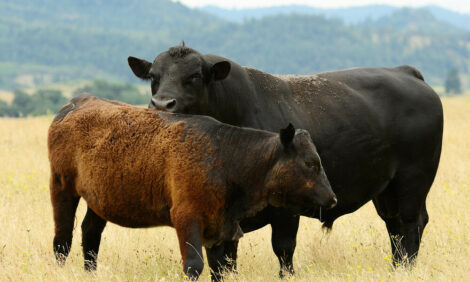



Cattle Are Not a Reservoir for New STEC
FRANCE - Researchers have found that cattle are not a reservoir for the new highly virulent enteroaggregative Shiga toxin–producing Escherichia coli of (STEC) O104:H4, which was the cause of an outbreak of foodborne disease from sprouts in Europe last year.In a paper to be published in Veterinary Microbiology, Frédéric Auvray of the Maisons–Alfort Laboratory for Food Safety and co-authors at research institutes in Toulouse report that, in May–June 2011, a massive outbreak of haemolytic uraemic syndrome caused by enteroaggregative STEC O104:H4 occurred in Europe, which was linked to the consumption of sprouted seeds.
As ruminants are known reservoirs of STEC, they investigated whether cattle could be a reservoir of enteroaggregative STEC O104:H4 and a potential source of transmission to humans.
A total of 1,468 French cattle were analysed for faecal carriage of the outbreak strain by PCR assays targeting stx2, wzxO104, fliCH4 and aggR genetic markers.
None of the faecal samples contained the four markers simultaneously, indicating that cattle do not represent a reservoir of this recently emerged E. coli pathotype, concluded Auvray and co-authors.
Reference
Auvray, F., F. Dilasser, D. Bibbal, M. Kérourédan, E. Oswald and H. Brugère. 2012. French cattle is not a reservoir of the highly virulent enteroaggregative Shiga toxin-producing Escherichia coli of serotype O104:H4. Veterinary Microbiology. (in press). http://dx.doi.org/10.1016/j.vetmic.2012.02.029
To view the full paper (fee payable), click here.
TheCattleSite News Desk


